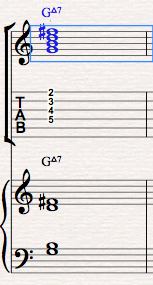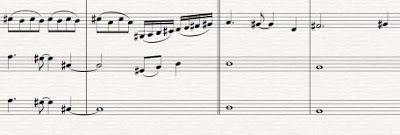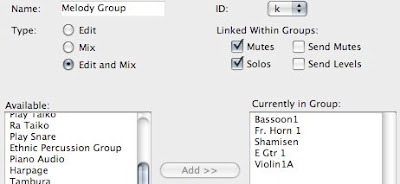By: Kole Hicks
If you’re like me, than you probably love to write music. However, you may eventually (if you haven’t already) run into the following issue: “Normal” sounds are not accurately expressing your muse’s intention.
Now don’t get me wrong, I love the sound of a masterfully played grand piano or open chords strummed on an acoustic guitar, but sometimes that just doesn’t work. Perhaps you’re writing just for yourself, a commission, or a media project… either way, these 4 tips will help give you refreshing ideas for creating unique musical colours.
1. Write it Different
What exactly do I mean by this? Well it’s actually quite subjective (as most of this article will be) because I don’t know what “normal” is to you; I can only assume that there are a set of “rules” that we are all familiar with and tend to follow when writing (whether it be consciously or not). So, when I recommend writing differently than you’re use to it could mean any of the following.
- A good composer should know what it is idiomatic on the instruments he is writing for, so I recommend consciously writing something that isn’t. For example, certain closed piano voicings are ridiculously difficult or almost impossible to play on guitar (quite obvious when you have 10 fingers available vs 4). However, you can change the tuning of the strings on the guitar so that you (or the performer) is now able to play these unique voicings.
- Do you always tend to write huge thematic melodies that soar sky-high? How about switching the roles of the musical ranges and using the bass clef for most of your melody work? I just recently did this for a project (as I was developing a theme through multiple ranges) and was pleasantly surprised with the outcome. A simple change like this (even when keeping the melody/harmony exactly the same) can give you drastically different results and evoke dramatically different emotions from the listener.
- Change your writing location/time! I just recently became aware of the fact that I write about 70% of the time around midnight or later right in my home studio. My whole studio has a unique “mood” to it and has seemed to permeate through everything I’ve created from there (which isn’t necessarily a bad thing, just not “appropriate” for certain projects). However, my home studio is not the ideal environment for a “Sunshiny-Bubbly-Happy-Time” type of piece. For that, I forced myself (as if it were difficult haha) to write while sitting outside under the shade of a tree. The results were quite different and I believe a large chunk of that is owed to the change in my physical location when writing.
2. Play it Different
A majority of us here are performers as well as composers and most likely play at least a few different instruments. So, I’d like to talk about a few different ways you can “play” your instrument differently or more accurately instruct your performers/session musicians to play the written notes in a unique way.
- First and foremost, if you tend to write a lot of Arco/Pizz. string lines, then why not switch it up with some Col Legno or maybe even instruct them to play at the bridge (Sul Ponticello)? As a general “rule”, if you’re playing an instrument that has been around for centuries, then there have been quite a few composers before you that have gone through a ton of different experiments to find unique musical colours. So, use this to your advantage and do some quick review reading in your instrumentation books!
- Use a different “attack” device. If you play guitar, who says you have to use a pick or just your nails? Why not use that pick for some heavy duty Pizz. Picking on a viola? Perhaps you could do some “ricochet” w/ the wood of a viola bow on your guitar while holding down chord shapes? The possibilities are endless, so use another instruments “attack” device or find something that wouldn’t normally be considered a musical device at all!
- Approach the instrument differently. I have a few friends that prefer to play their guitar like a piano (using both hands as well). The unique colours (not to mention melody/harmony combinations) they create are phenomenal. Perhaps you can think of your piano more as a percussion instrument for a certain piece, rather than that which would usually play melody/harmony? I bet with that mindset, you could come up with some great new colours. In fact, HERE is a link to a song I composed using “slap” techniques on a guitar tuned to DADGAD.
3. Record it Different
Just like everyone has a unique compositional voice, everyone seems to have a different opinion on recording. Many believe that there are set rules/guidelines that must be learned and followed a majority of the time to create great recordings. Then there are others who believe it can’t really be taught at all, but must be learned through experience and a majority of the “rules” are garbage. My opinion lies somewhat in the middle.
- Use different mics. There are tons of mics out there which are “specialty” mics and are usually only used for recording vocals or only guitar, etc. However, that doesn’t mean you can’t use those mics for anything different. Why can’t you use that high end vocal mic to record a cello? Who is to put a limit on how many or what mics you use if you end up liking the end result?
- Use different mic positions. Have a huge basement or garage and want some more depth to your snare or other random percussion instruments? Setup a mic at the end, one in the middle and one up close. Do you like to hear the percussive attack of a guitar? Position a mic closer to the picking hand and fret board (if you like to hear the slides from chord changes) to hear more of the performer come through on the track.
4. Mix it Different
This can cover everything from effects & EQ to Reverb & even your system/method of mixing. First I’d like to talk about the more obvious and perhaps more easily changed options when mixing. Mixing (as pretty much everything else I’ve spoken about) is quite subjective, as I know many guitarists that would boost certain frequencies when EQing their lead guitar track and yet there are many others (just as “qualified”) that would scoff at their choice. So, I recommend becoming aware and keeping track of your tendencies when mixing.
- Do you tend to roll off the bass of all your violin tracks? Is there one reverb preset that you tend to use more than any other? Do you tend to use the same distortion/pedal effects for you guitar parts? Keep track of all of this (physically writing it down is recommended) and identify the things that are a part of your sound and which tendencies can be “manipulated” to help you reach the goal of creating unique musical colours.
- There are of course many other factors that come into play when mixing, but the other major “event” in the process that I recommend changing, is your system of mixing. I know that when I mix, I like to have everything very organized in their unique groups (aka strings, brass, electric percussion, etc.). However, if my goal is to create something completely new and unique I may tweak (don’t need to necessarily overhaul the system) those groups. So, now instead of organizing the groups by instrument sections, I could perhaps organize them by their relevance or importance to the piece. Perhaps the first violins would be grouped with a sitar and thus my whole approach to the individual (and the entire) mix would be much different than if I had kept my previous system intact.
- I’m sure that there are many more variables in each one of these topics that I have not addressed (Probably many more topics as well!). However, this should be a great starting point to help you create some unique musical colours and anything I have left out could perhaps be material for a later article ?. Until then, I wish you all the best and if you learn anything at all from this article, let it be this: Don’t be afraid to ask questions.
Take care and keep composing, fellow artists!
 About the author: Kole Hicks is an Author, Instructor, and most prominently an Audio Designer with a focus in Games. He’s had the pleasure of scoring mobile hits like ‘Bag it!’, has provided audio for Indie PC titles like ‘Kenshi’ and ‘Jeklynn Heights’, and was nominated for a 2012 GANG award for an article written exclusively for Shockwave-Sound.com titled, “Mixing as Part of the Composing Process. Emotionally Evocative Music & Visceral Sound Effects… Kole Audio Solutions.
About the author: Kole Hicks is an Author, Instructor, and most prominently an Audio Designer with a focus in Games. He’s had the pleasure of scoring mobile hits like ‘Bag it!’, has provided audio for Indie PC titles like ‘Kenshi’ and ‘Jeklynn Heights’, and was nominated for a 2012 GANG award for an article written exclusively for Shockwave-Sound.com titled, “Mixing as Part of the Composing Process. Emotionally Evocative Music & Visceral Sound Effects… Kole Audio Solutions.







